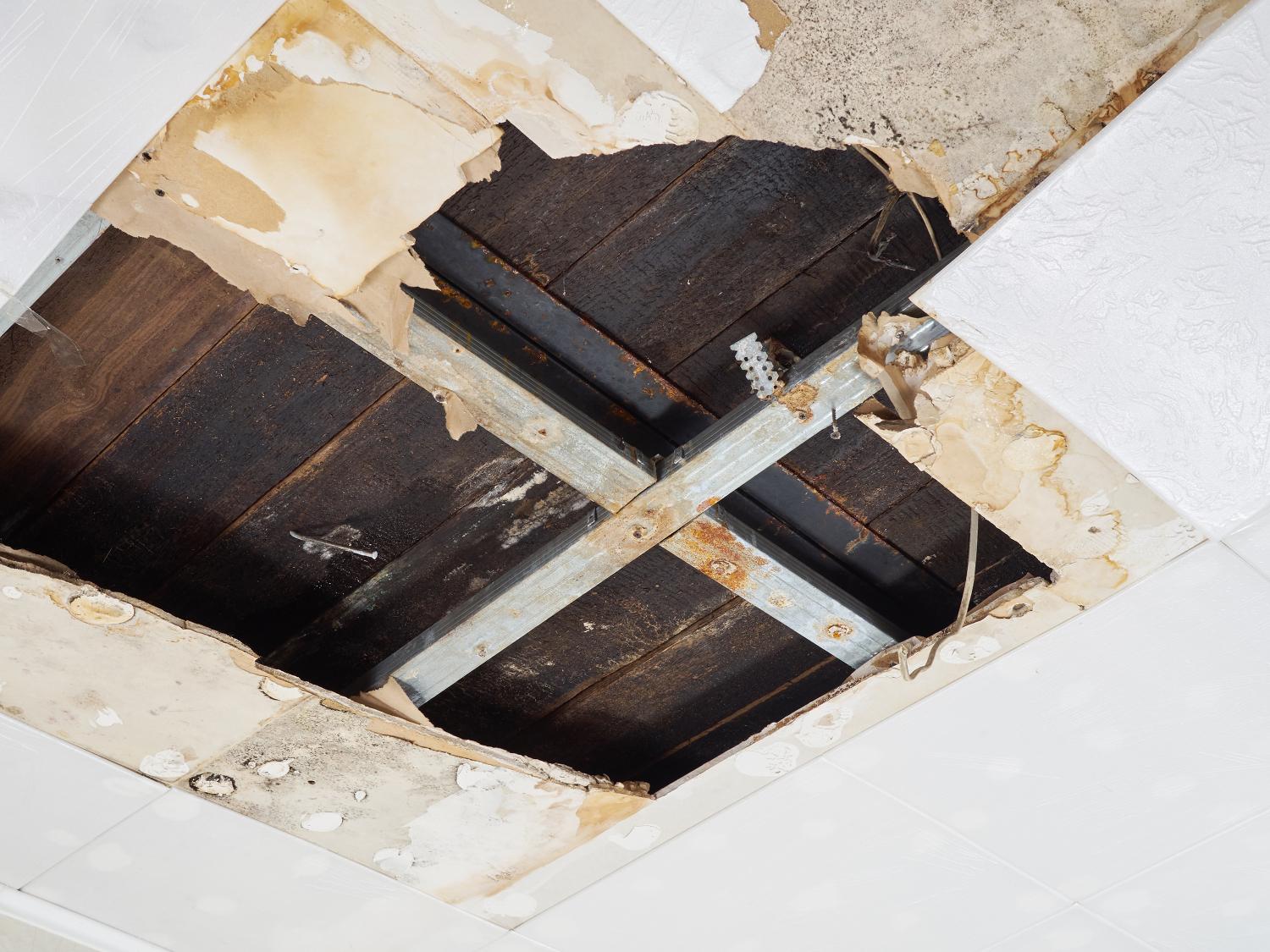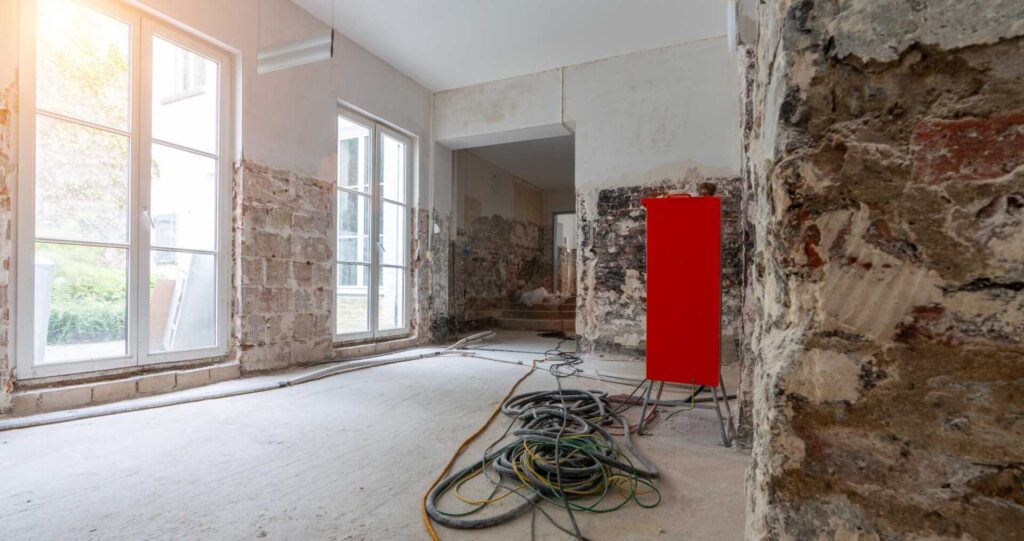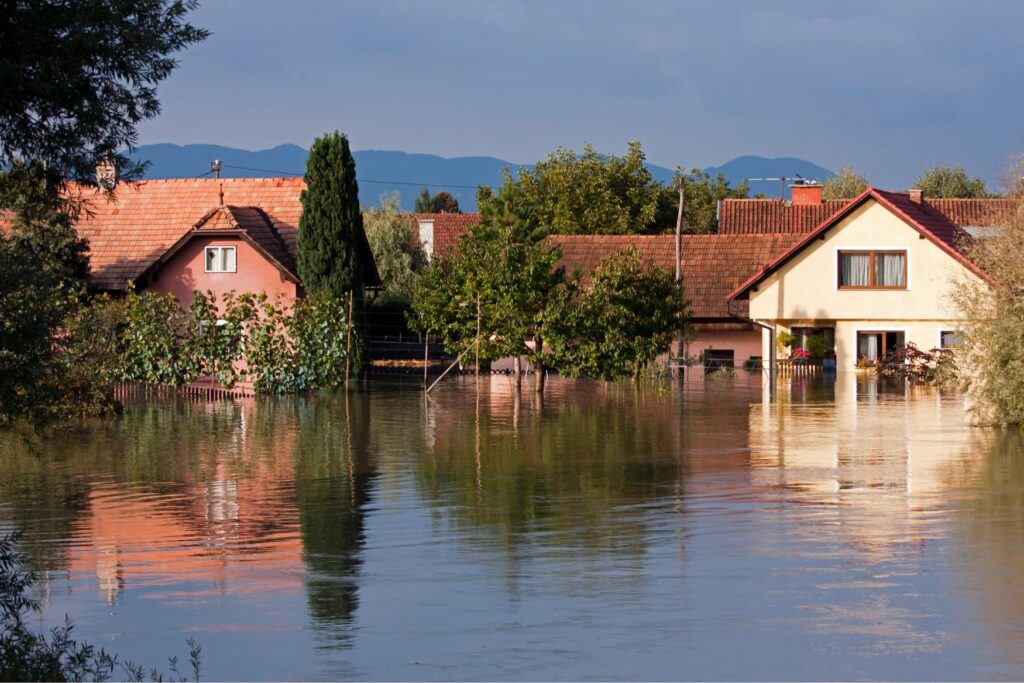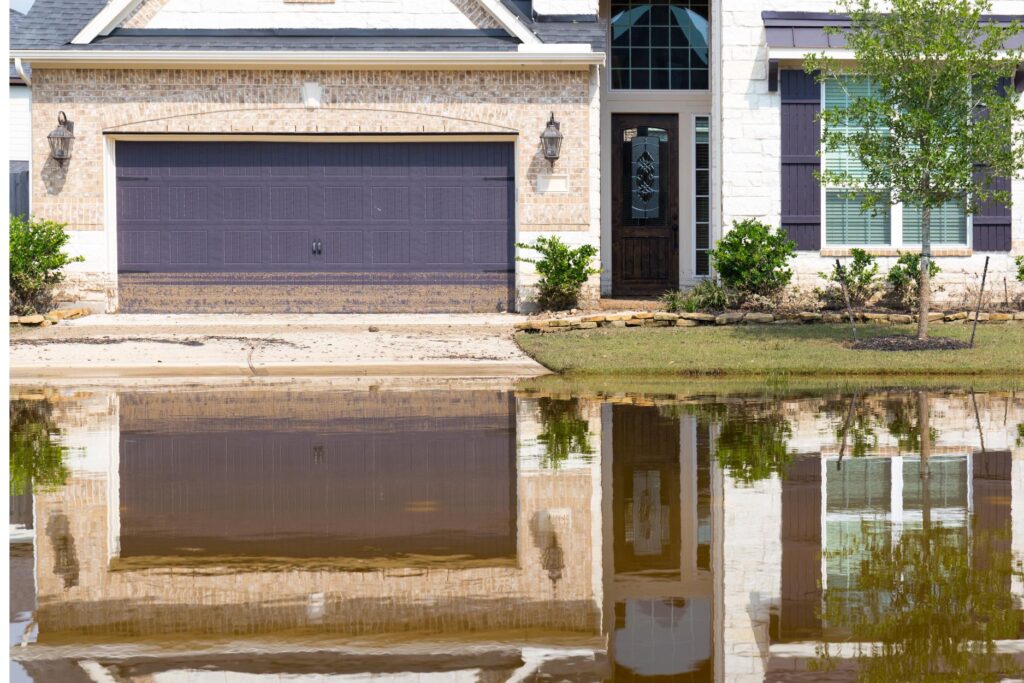Contents
When faced with water damage, you need a solid plan to tackle the aftermath effectively. From evaluating the initial scope of the damage to taking proactive steps to prevent future problems, each step in the process is vital. By following these ten essential tips, you can navigate the complexities of water damage repair with confidence and ensure your property is restored to its previous condition. Stay tuned to discover the key strategies that will help you safeguard your home and belongings in case of unforeseen water damage incidents.
Assessing the Damage
When faced with water damage in your home, the first step is essential: evaluating the extent of the damage. This initial evaluation sets the stage for the entire repair process. Begin by carefully inspecting the affected areas. Look for visible signs such as watermarks, peeling paint, or bulging walls. Pay attention to any musty scents, as these can indicate hidden moisture issues. Use a flashlight to check dark corners and concealed spaces where water may have seeped in.
Next, determine the type of water damage you’re dealing with. Clean water from a burst pipe is different from contaminated water from a sewage backup. Understanding the water category helps you take the necessary precautions and plan the appropriate cleanup method.
Take note of the materials affected by the water, such as drywall, insulation, flooring, or furniture. Different materials require specific drying techniques to prevent further damage and mold growth.
Document the damage with photographs or videos for insurance purposes. This visual evidence can support your claim and ensure you receive adequate coverage for the repairs.
Make a detailed list of the items damaged or lost due to water exposure. This inventory is essential for filing insurance claims and tracking restoration progress. By thoroughly evaluating the water damage, you lay the foundation for a successful repair process and restore your home to its former glory.
Identifying the Source
When dealing with water damage repair, identifying the source is essential to prevent further issues. Techniques such as visually inspecting pipes, checking for leaks, and monitoring moisture levels can help pinpoint the origin of the water damage.
Common sources of water damage include:
- Burst pipes
- Leaking roofs
- Malfunctioning appliances
- Poorly sealed windows or doors
Source Inspection Techniques
To effectively address water damage, identifying the source is essential. When inspecting the source of water damage, start by checking common culprits such as leaky pipes, overflowing gutters, or damaged roofs. Look for signs like water stains, mold growth, or musty odors to pinpoint the origin accurately. Utilize tools like moisture meters to detect hidden moisture levels within walls or floors. Pay close attention to areas prone to water intrusion, such as basements, bathrooms, and kitchens.
Inspect the exterior of your property for cracks in the foundation, missing shingles, or clogged drainage systems, which can lead to water seepage. Inside, examine appliances like dishwashers, washing machines, and water heaters for leaks or malfunctioning connections.
Don’t forget to inspect the HVAC system for condensation buildup or pipe leaks.
Common Water Sources
Inspecting common water sources is an important step in effectively addressing water damage. Identifying the source of water intrusion is vital to prevent further damage and ensure a successful restoration process. Here are some common water sources to watch out for:
| Source | Description |
|---|---|
| Plumbing | Leaky pipes, burst hoses, or faulty fixtures |
| Roof | Damaged shingles, clogged gutters, or skylights |
| Appliances | Malfunctioning dishwashers, refrigerators, etc. |
| Natural | Heavy rainfall, floods, or groundwater seepage |
Checking these potential sources meticulously can help you pinpoint the root cause of water damage, enabling you to take prompt action and mitigate any further harm. Remember, early detection and intervention are key to minimizing the impact of water damage. By being proactive in inspecting these common water sources, you can protect your property and belongings from extensive destruction.
Extracting Standing Water
Upon encountering standing water in your home, the immediate priority is to swiftly remove it to prevent further damage and mold growth. To effectively extract standing water, begin by using a wet-dry vacuum if the water level is manageable. Make sure the power cord is away from the water to prevent electric shock. Move the vacuum slowly across the area, overlapping each stroke to capture as much water as possible.
For larger amounts of standing water, consider using a submersible pump. Place the pump at the lowest point of the flooded area and direct the hose towards a drain or outside. Be sure to follow the manufacturer’s instructions for proper usage. If you don’t have access to a pump, mops, buckets, and towels can also be used to manually remove water.
As you extract the water, periodically check for any hidden pockets of moisture in walls, under cabinets, or in corners. Thoroughly dry these areas to prevent mold growth.
Once the standing water has been removed, focus on drying out the space completely to avoid further damage. Remember, the quicker you extract standing water, the better chance you have of preventing extensive water damage and mold issues.
Drying Out the Area
Begin by strategically placing fans and dehumidifiers in the affected area to facilitate the drying process. Fans help circulate the air and speed up evaporation, while dehumidifiers work to remove excess moisture from the environment. Position the fans at different angles to ensure sufficient air circulation throughout the space. Ideally, aim to create a crosswind effect by situating fans on opposite sides of the room.
To maximize the drying efficiency, keep windows and doors shut to prevent additional moisture from entering the area. Monitor the progress regularly and adjust the positioning of the fans and dehumidifiers as necessary to target damp spots. It’s vital to leave the equipment running continuously until the area is completely dry to prevent mold growth and further damage.
For larger spaces or severe water damage, consider renting professional-grade drying equipment. Industrial air movers and desiccant dehumidifiers can greatly expedite the drying process and prevent long-term issues. Remember that thorough drying is crucial to avoid structural damage and potential health hazards associated with mold growth.
Removing Damaged Materials
When removing damaged materials after water damage, the essential steps involve salvaging salvageable materials and ensuring proper disposal methods.
Salvaging materials that can be saved is vital to minimize the overall repair cost and time.
It’s equally important to follow appropriate disposal methods for items that are beyond repair to prevent health hazards and further damage.
Salvaging Salvageable Materials
To effectively salvage salvageable materials during water damage repair, you must carefully assess the extent of the damage and identify which items can be salvaged. Here are some essential tips to help you salvage materials successfully:
Quick Action: Act promptly to salvage items like wooden furniture, documents, and electronics by drying them out within 48 hours to prevent mold growth.
Proper Cleaning: Use mild detergent and water to clean salvageable items like metal or plastic objects. For textiles, wash them with a disinfectant to remove any contaminants.
Professional Help: Seek assistance from restoration experts for delicate items such as artwork, antiques, and heirlooms. They have the expertise and tools to salvage these items effectively.
Proper Disposal Methods
Efficient water damage repair involves salvaging materials as well as knowing how to properly dispose of damaged items. When dealing with water-damaged materials, it’s critical to follow correct disposal methods to ensure safety and prevent further contamination. Here are some essential tips for disposing of damaged items:
| Materials | Disposal Method | Notes |
|---|---|---|
| Wet Carpets | Contact waste disposal services for pickup | Carpets can be heavy when wet, handle with caution |
| Soaked Drywall | Seal in plastic bags before disposal | Prevents the spread of mold spores |
| Waterlogged Furniture | Check with local regulations for proper disposal | Some furniture may require special handling |
Properly disposing of damaged materials is vital for the health and safety of your household and the environment. By adhering to the recommended disposal methods, you can effectively clean up after water damage and create a secure living environment for yourself and your loved ones.
Dealing With Mold Growth
Mold growth can be a serious issue in water-damaged areas and should be addressed promptly to prevent further damage and potential health risks. Dealing with mold can be overwhelming, but with the right approach, you can effectively manage it. Here are some essential tips to help you navigate through this challenge:
Identify the Mold: Start by identifying the type of mold present in your space. This can help determine the appropriate remediation methods needed for effective removal.
Containment: Isolate the affected area to prevent the spread of mold spores to other parts of your home. Use plastic sheeting and tape to seal off the space, and consider using a HEPA-filtered air purifier to improve air quality.
Professional Help: When dealing with extensive mold growth or if you have health concerns, it’s best to seek help from professionals. Mold remediation experts have the necessary tools, knowledge, and experience to handle the situation effectively.
Sanitizing and Disinfecting
When addressing water damage, ensuring thorough sanitizing and disinfecting is vital to prevent the growth of harmful bacteria and pathogens. After water damage occurs, it’s essential to sanitize and disinfect all affected areas properly. Begin by wearing protective gear such as gloves, masks, and goggles to protect yourself from any potential hazards during the cleaning process.
To begin, remove any visible dirt, debris, or mold from surfaces using soap, water, and a scrub brush. Once the visible contaminants are cleared, use a solution of water and bleach (1 cup of bleach per gallon of water) to disinfect the area. Apply this solution generously to all affected surfaces and allow it to sit for at least 10-15 minutes before rinsing thoroughly with clean water.
For areas that are harder to reach or have been heavily affected by water damage, consider using a professional-grade disinfectant to ensure thorough sanitization. These products are specially formulated to eliminate a wide range of bacteria and pathogens that may be present in water-damaged areas.
After sanitizing and disinfecting, ensure proper ventilation in the area to aid in drying and prevent the growth of mold and mildew. Following these steps diligently will help create a safe and healthy environment in your home post-water damage.
Restoring the Property
When restoring your property after water damage, the first step is to conduct a thorough examination of the damage.
This includes evaluating the extent of the water intrusion and identifying any structural issues. Proper drying methods must then be utilized to prevent mold growth and further damage.
Inspection for Damages
Upon entering the property to start the inspection for damages, your first task is to assess the extent of the water damage and formulate a restoration plan. This critical step sets the foundation for efficient and effective repairs.
Inspection for Damages:
Check for Visible Signs: Look for water marks, discoloration, or mold growth on walls, ceilings, and floors.
Inspect Structural Integrity: Evaluate the condition of the building materials, such as drywall, insulation, and flooring, for any indications of weakening or damage.
Assess Electrical Systems: Verify that all electrical components affected by water are identified and properly examined to prevent safety hazards.
Proper Drying Techniques
To effectively restore the property after water damage, implementing proper drying techniques is critical. After water intrusion, it’s vital to begin the drying process promptly to prevent further damage and mold growth.
Start by opening windows and using fans to increase air circulation. Dehumidifiers are also helpful in removing excess moisture from the air.
For carpets and upholstery, use wet/dry vacuums to extract as much water as possible. Lift furniture off wet carpets and place aluminum foil underneath furniture legs to prevent staining. Remove any wet fabrics and hang them to dry.
Wooden furniture should be dried gradually to prevent cracking. Additionally, consider removing baseboards to aid in the drying of wall cavities. Check hidden areas like closets and cabinets for dampness.
Repairing Structural Elements
Repairing structural elements after water damage is an essential step in restoring your property to its pre-damage condition. When addressing structural elements, consider the following:
Assessment: Begin by conducting a thorough inspection to identify the extent of the damage. Look for signs of weakening, warping, or mold growth.
Repair Plan: Develop a detailed repair plan that outlines the specific actions needed to address the structural issues. This plan should include timelines, materials needed, and any professional assistance required.
Execution: Implement the repair plan systematically, starting with addressing any immediate safety hazards. Replace damaged materials, reinforce weakened structures, and ensure proper waterproofing to prevent future damage.
Preventing Future Damage
When considering preventing future water damage in your home, one significant aspect to focus on is regular maintenance of your plumbing system. Proper maintenance can help you avoid costly repairs and potential water damage in the future. Start by checking for any leaks or drips in your faucets, pipes, or appliances regularly. Even a small leak can lead to significant damage over time if left unchecked.
Additionally, inspect your water heater for any signs of corrosion or leaks. Flushing it annually can help prevent sediment buildup, which can cause leaks and reduce its efficiency.
Another vital step in preventing water damage is to inspect your gutters and downspouts regularly. Clogged gutters can lead to water overflow, which can seep into your home’s foundation and cause damage. Confirm that your gutters are clear of debris and that downspouts direct water away from your home’s foundation.
Furthermore, consider installing a sump pump in your basement or crawlspace if you live in an area prone to flooding. A sump pump can help prevent water buildup during heavy rains and reduce the risk of water damage to your property.
Hiring Professional Help
Addressing water damage issues promptly is essential to preventing further damage and maintaining the integrity of your home. When it comes to hiring professional help for water damage repair, here are some key considerations to keep in mind:
Expertise: Professionals bring in-depth knowledge and experience to assess the extent of the water damage accurately. They can identify hidden issues that untrained eyes might miss, ensuring a thorough restoration process.
Efficiency: Hiring professionals can expedite the repair process, minimizing the time your home is exposed to potential risks like mold growth or structural damage.
Their efficient handling of the situation can help restore your home to its pre-damaged condition swiftly.- Insurance Assistance: Dealing with insurance claims can be complex and overwhelming. Water damage restoration professionals can work with your insurance company on your behalf, ensuring that you receive the coverage you’re entitled to.
Their expertise in managing the insurance process can alleviate stress during an already challenging time.
Summary
Now that you have followed these essential tips for water damage repair, you are well on your way to restoring your property to its former glory. Remember, like a skilled craftsman shaping a masterpiece, attention to detail and thoroughness are key in the restoration process. By taking the necessary steps and working with professionals, you can make sure that your property is repaired and also protected from future water damage.




